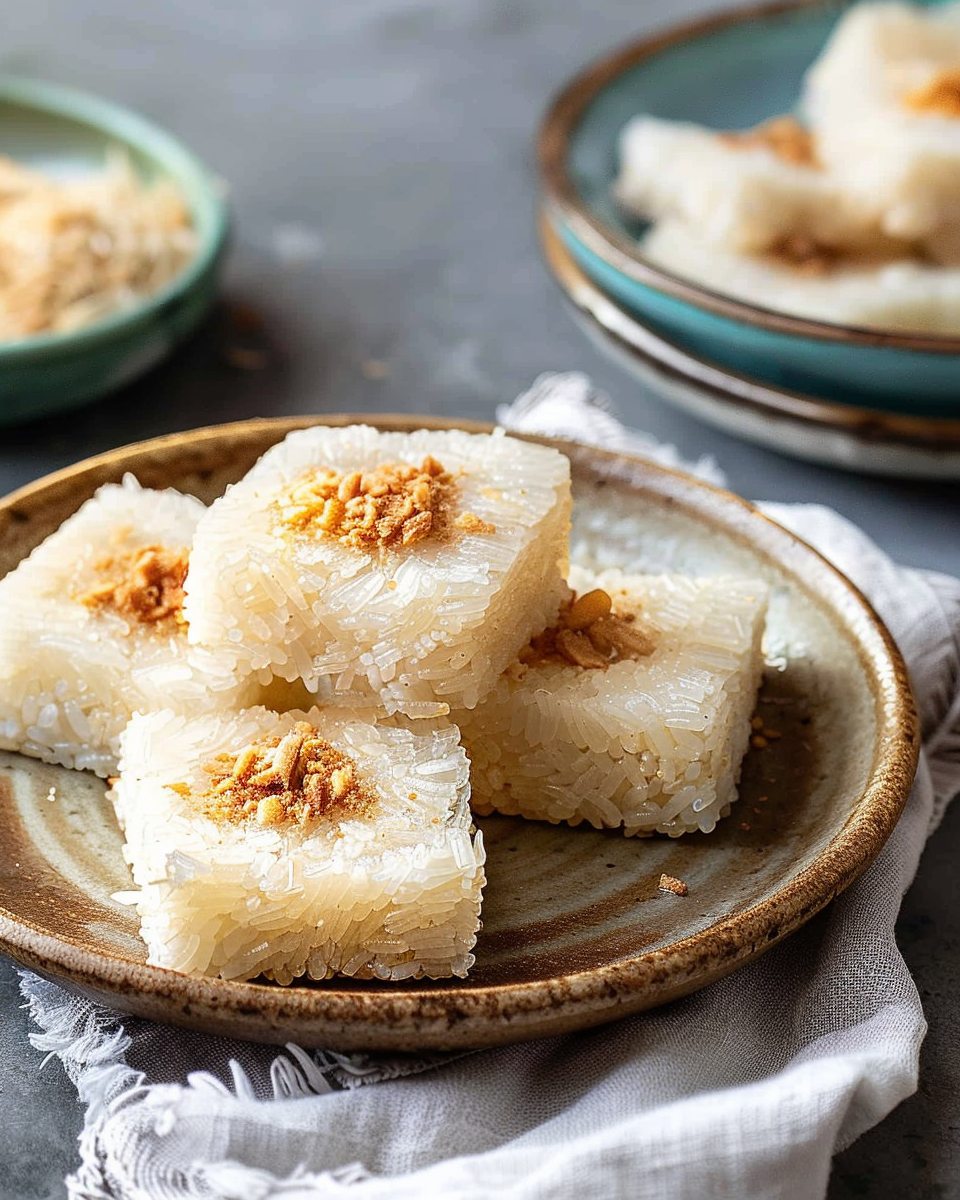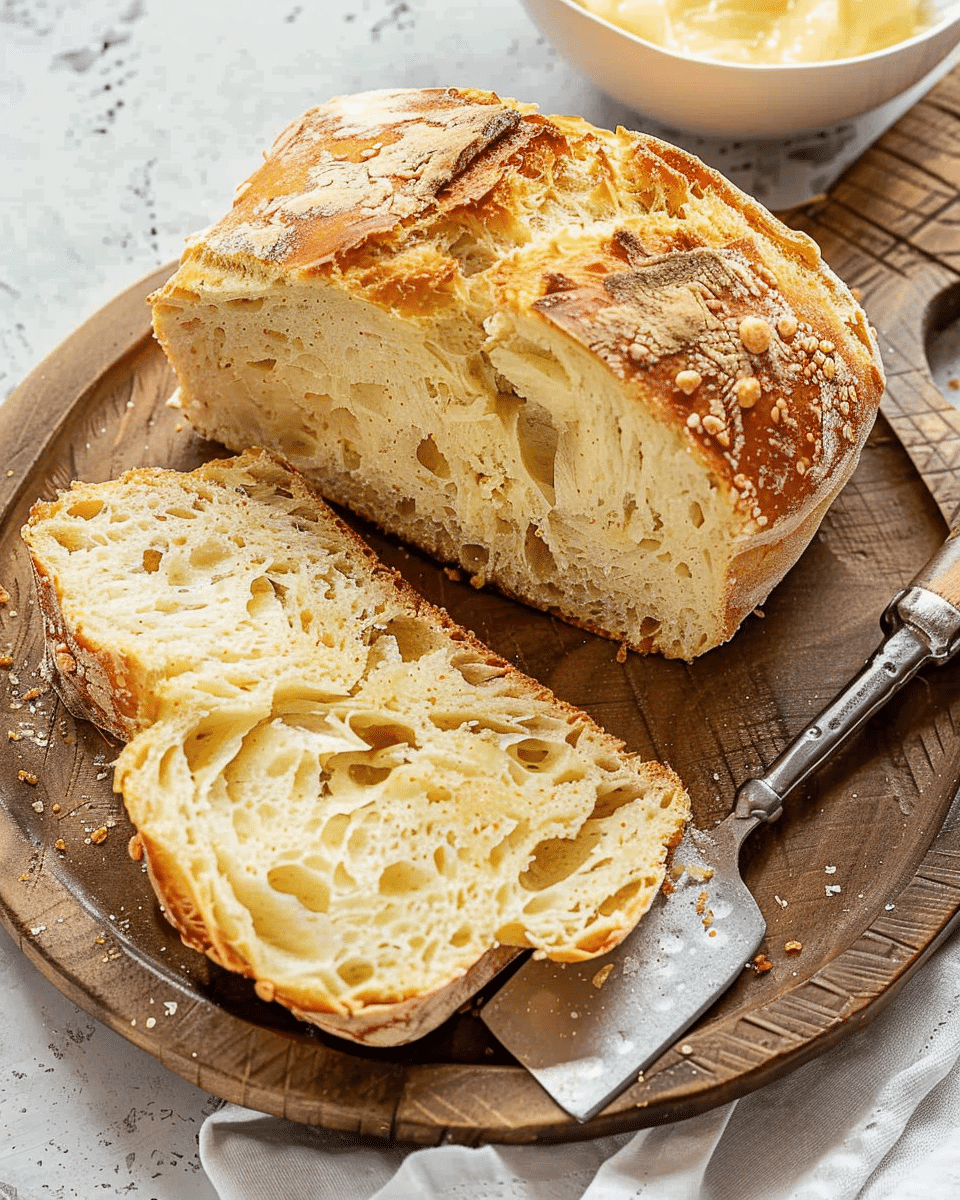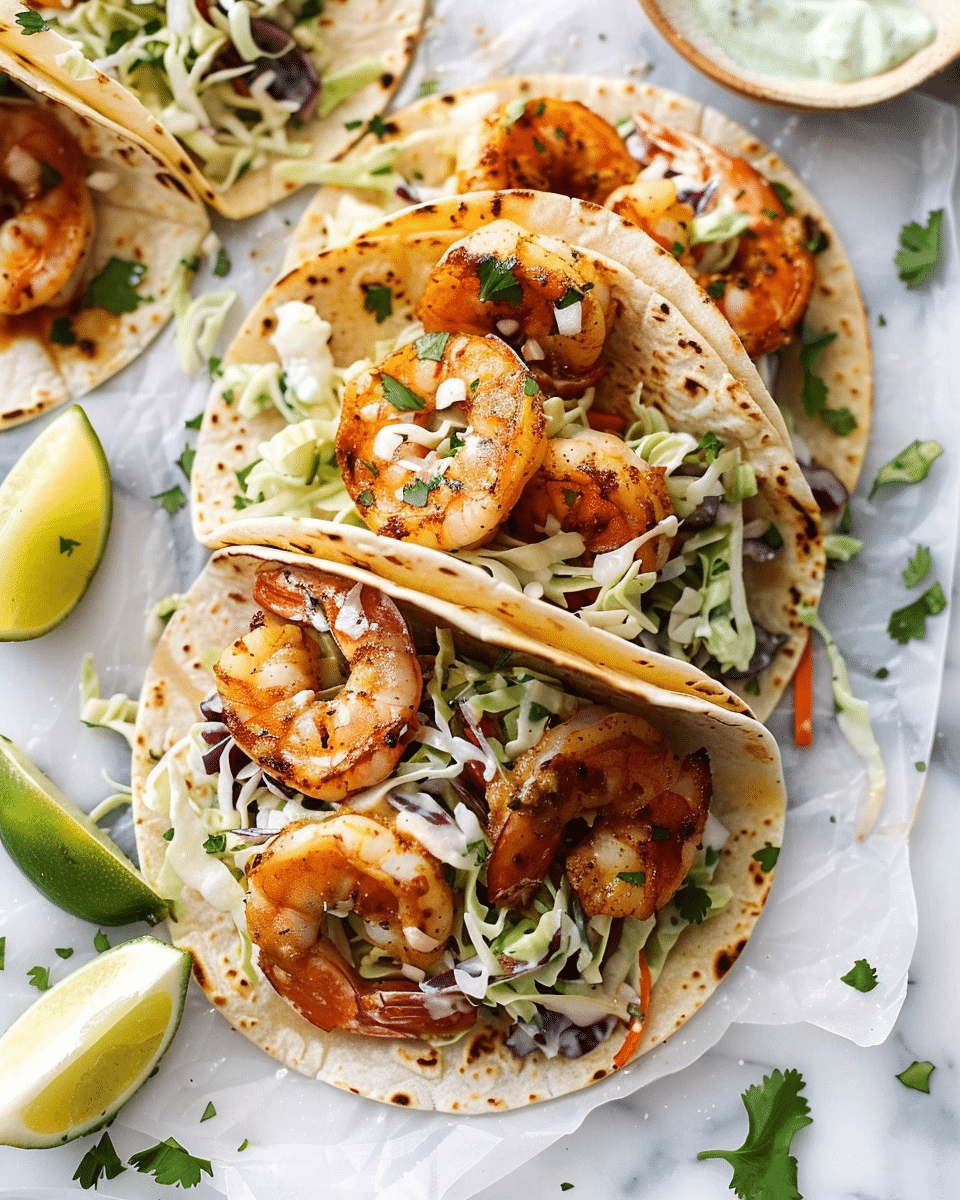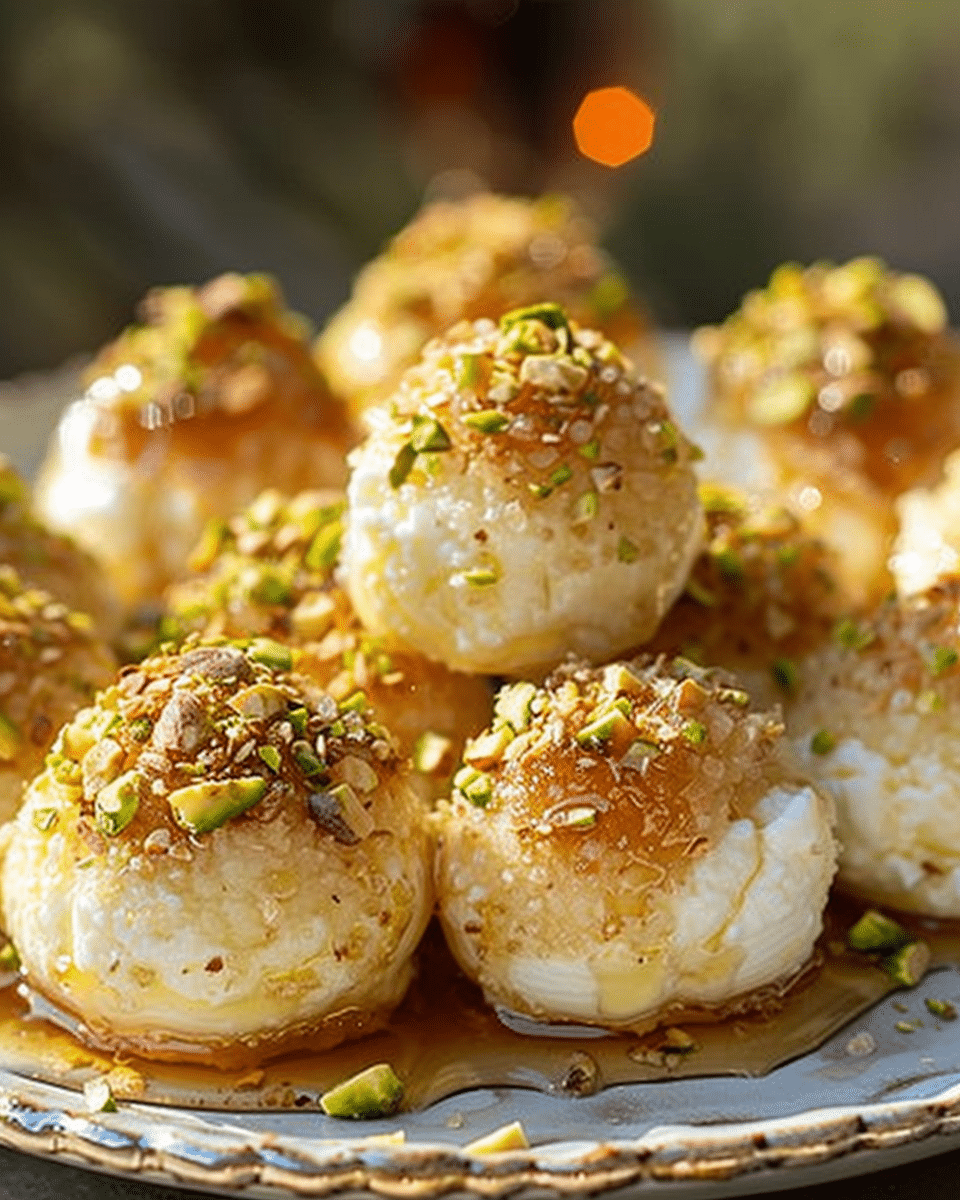Biko (Filipino Sticky Rice Cake) a rich and chewy dessert made with glutinous rice, coconut milk, and brown sugar, Biko is one of those classic Filipino treats I always go back to. It’s soft, sticky, sweet, and satisfying—perfect for celebrations, holidays, or even just a cozy merienda at home. This traditional rice cake has a caramelized flavor that comes from the blend of coconut milk and brown sugar, and it’s often topped with latik (coconut milk curds) or drizzled with coconut cream for extra richness.
Why You’ll Love This Recipe
I love how Biko comes together with just a few pantry staples, yet it delivers big on taste and texture. It’s naturally gluten-free, dairy-free, and plant-based, making it a great dessert to share with just about anyone. The rich coconut flavor, sticky and chewy texture, and the nostalgic vibes of Filipino family gatherings make this dish something special. Whether I serve it for a party or enjoy it as a snack, Biko always hits the spot.
Ingredients
(Tip: You’ll find the full list of ingredients and measurements in the recipe card below.)
2 cups glutinous rice (malagkit)
2 cups water
1 1/4 cups dark brown sugar (packed)
2 cups coconut milk (full fat)
1/2 teaspoon salt
1 tablespoon coconut oil (for greasing)
Optional topping: Latik (coconut milk curds) or extra coconut cream
Directions
I rinse the glutinous rice thoroughly and combine it with water in a pot. I bring it to a boil over medium heat.
Once it’s boiling, I reduce the heat to low and let it simmer, stirring occasionally, until the water is absorbed and the rice is just cooked but not mushy (about 10–15 minutes).
In a separate large nonstick pan, I combine the coconut milk, brown sugar, and salt. I stir the mixture well and cook it over medium heat until it thickens slightly (around 5–8 minutes).
I add the partially cooked glutinous rice to the coconut mixture and stir until the rice is fully coated.
Then I continue cooking over medium-low heat, stirring constantly to prevent sticking, until the mixture becomes very thick, sticky, and pulls away from the pan (about 15–20 minutes).
I grease a square or rectangular baking dish lightly with coconut oil.
I transfer the sticky rice mixture into the dish and press it down evenly with a spatula.
Optionally, I top it with latik or drizzle it with thick coconut cream for extra flavor.
I let it cool slightly before slicing into squares or rectangles.
Servings and timing
This recipe yields 12 servings. It takes about 10 minutes to prepare and 40 minutes to cook, for a total time of 50 minutes. Each serving contains approximately 320 kcal.
Variations
Latik topping: I like making latik for a traditional and crunchy coconut topping—it adds great contrast to the sticky base.
Coconut cream drizzle: Sometimes I drizzle a thickened coconut cream over the top for extra indulgence.
Ube twist: I mix in a bit of ube halaya or ube extract for a purple version of Biko with a subtle nutty flavor.
Less sweet version: If I prefer it less sweet, I reduce the brown sugar slightly and still get a delicious result.
Banana leaf lining: For a more traditional touch, I line the dish with banana leaves before pressing in the sticky rice.
Storage/Reheating
I store leftover Biko in an airtight container at room temperature for up to 2 days, or in the refrigerator for up to 5 days. When I reheat it, I use the microwave for 20–30 seconds per piece to bring back its soft, sticky texture. I can also steam it for a few minutes if I want it extra warm and moist.
Related Recipes:
FAQs
What type of rice should I use for Biko?
I always use glutinous rice, also known as sticky rice or “malagkit” in Filipino. Regular rice won’t give the sticky texture that Biko is known for.
Can I make Biko ahead of time?
Yes, I often make Biko a day in advance. I let it cool completely, cover it well, and store it at room temperature or in the fridge. It reheats beautifully.
Is Biko gluten-free?
Yes, Biko is naturally gluten-free since it uses glutinous rice, which contains no gluten, despite the name.
How do I make latik?
To make latik, I simmer coconut cream in a pan until the oil separates and the solids turn golden brown. I scoop out the curds and use them as a topping.
Can I freeze Biko?
I don’t recommend freezing Biko because the texture changes and becomes less appealing when thawed. It’s best enjoyed fresh or refrigerated for a few days.
Conclusion
Biko is one of those timeless Filipino desserts that’s both simple and satisfying. I love how a few basic ingredients come together to make something so rich, comforting, and meaningful. Whether I serve it for a special gathering or enjoy a slice with coffee in the afternoon, this sticky rice cake always brings a taste of home.
📖 Recipe:
Print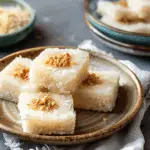
Biko (Filipino Sticky Rice Cake)
5 Stars 4 Stars 3 Stars 2 Stars 1 Star
No reviews
- Author: Isabella
- Total Time: 50 minutes
- Yield: 12 servings
- Diet: Gluten Free
Description
Biko is a traditional Filipino sticky rice cake made with glutinous rice, coconut milk, and brown sugar. It’s a rich, chewy, and naturally gluten-free dessert that’s perfect for celebrations or as a cozy afternoon treat.
Ingredients
2 cups glutinous rice (malagkit)
2 cups water
2 cups coconut milk (full fat)
1 1/4 cups dark brown sugar (packed)
1/2 teaspoon salt
1 tablespoon coconut oil (for greasing)
Optional topping: Latik (coconut milk curds) or extra coconut cream
Instructions
- Rinse the glutinous rice thoroughly and combine it with water in a pot. Bring to a boil over medium heat.
- Once boiling, reduce heat to low and simmer, stirring occasionally, until the water is absorbed and the rice is just cooked but not mushy (about 10–15 minutes).
- In a separate large nonstick pan, combine the coconut milk, brown sugar, and salt. Stir well and cook over medium heat until slightly thickened (around 5–8 minutes).
- Add the partially cooked rice to the coconut mixture and stir until fully coated.
- Continue cooking over medium-low heat, stirring constantly, until very thick and sticky, and the mixture pulls away from the pan (about 15–20 minutes).
- Lightly grease a square or rectangular baking dish with coconut oil.
- Transfer the sticky rice mixture into the dish and press it down evenly with a spatula.
- Optionally, top with latik or drizzle with thick coconut cream for extra flavor.
- Let cool slightly before slicing into squares or rectangles.
Notes
For a traditional touch, line the baking dish with banana leaves before adding the rice mixture.
Reduce brown sugar slightly for a less sweet version.
For a fun twist, mix in ube halaya or ube extract.
Best reheated in the microwave or steamed for a softer texture.
Store leftovers in an airtight container for up to 2 days at room temp or up to 5 days in the fridge.
- Prep Time: 10 minutes
- Cook Time: 40 minutes
- Category: Dessert
- Method: Stovetop
- Cuisine: Filipino
Nutrition
- Serving Size: 1 piece
- Calories: 320
- Sugar: 20g
- Sodium: 100mg
- Fat: 15g
- Saturated Fat: 13g
- Unsaturated Fat: 1.5g
- Trans Fat: 0g
- Carbohydrates: 45g
- Fiber: 1g
- Protein: 3g
- Cholesterol: 0mg


